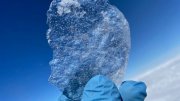In May, I had the pleasure of announcing that Hansjörg Wyss had followed his pathbreaking 2008 gift establishing the Wyss Institute for Biologically Inspired Engineering with a second gift of $125 million to launch the next phase of its growth. In not quite five years, the Wyss Institute has developed into an engine of creativity and innovation, involving hundreds of faculty and staff from across Harvard and the region in developing life-changing medicines and technologies—exploring how to prevent infant apnea with responsive mattresses, advancing sepsis therapy with biospleens, or revolutionizing drug development with organs on a chip. Work at the Wyss has already yielded more than 400 patents.
The energy we see at the Wyss is just one part of ongoing growth and transformation in engineering and science at Harvard. It is clearly visible in Harvard College, where teaching in science, technology, engineering, and math (STEM) fields has been overhauled with new integrative introductory courses. Forty percent of undergraduates are now STEM concentrators. Since the School of Engineering and Applied Sciences (SEAS) became a school in 2007, the numbers of engineering concentrators has climbed—doubling in just the past three years. Getting students involved in research early on is key to their engagement and sustained interest in scientific careers, and we have focused on making such opportunities more central and available for our students.
The Department of Stem Cell and Regenerative Biology (SCRB) was created in 2007 as Harvard’s first cross-School department, part of both Harvard Medical School and the Faculty of Arts and Sciences, and has attracted considerable student interest in its concentration, established just four years ago and now triple its original size. SCRB and the Harvard Stem Cell Institute, involving collaborators across the University and the hospitals, hailed two highly significant discoveries by its faculty this spring: the identification of a hormone that has promise to become the basis of a more effective treatment for diabetes and the identification of a protein that reverses age-related heart failure in mice.
Collaborations and partnerships are important aspects of the changing landscape of science at Harvard. This year, we mark the tenth anniversary of the Broad Institute of Harvard and MIT. Building on the insights of the Human Genome Project, the Broad seeks to assemble a complete picture of the molecular components of life and uncover the molecular bases of major inherited and infectious diseases. Broad faculty and affiliates have recently announced the discovery of genetic mutations occurring in more than 70 percent of melanomas, new insight into the role of recessive genes in autism, and new understanding of subtypes of endometrial cancer. In March I joined with my counterparts at MIT and Mass General to open the new home for another noteworthy cross-institutional collaboration, the four-year-old Ragon Institute, where research on HIV vaccines and on immunology more generally is being significantly advanced.
From designing new imaging techniques to revealing connections among neurons in the brain to identifying relationships between neuroscience and the foundations of human behavior to developing new methods of finding planets outside our solar system, Harvard faculty and students are pursuing scientific discoveries across the broad range of scientific fields. From beginning undergraduates encountering the revolutionized instruction in Life Sciences 1A to the Nobel Prize winner now deeply engaged in our University-wide initiative on the Origins of Life, we see excitement about the novel approaches, tools, techniques—advances in computation, imaging, data management, and analysis, to name a few—that make the promise and pace of scientific learning and discovery unprecedented. At Harvard we are greeting the possibilities inherent in the twenty-first century’s scientific revolution by creating new collaborations, new connections, new programs, new courses—and, of course, new scientists educated to build our future.
Sincerely,
Drew Faust






